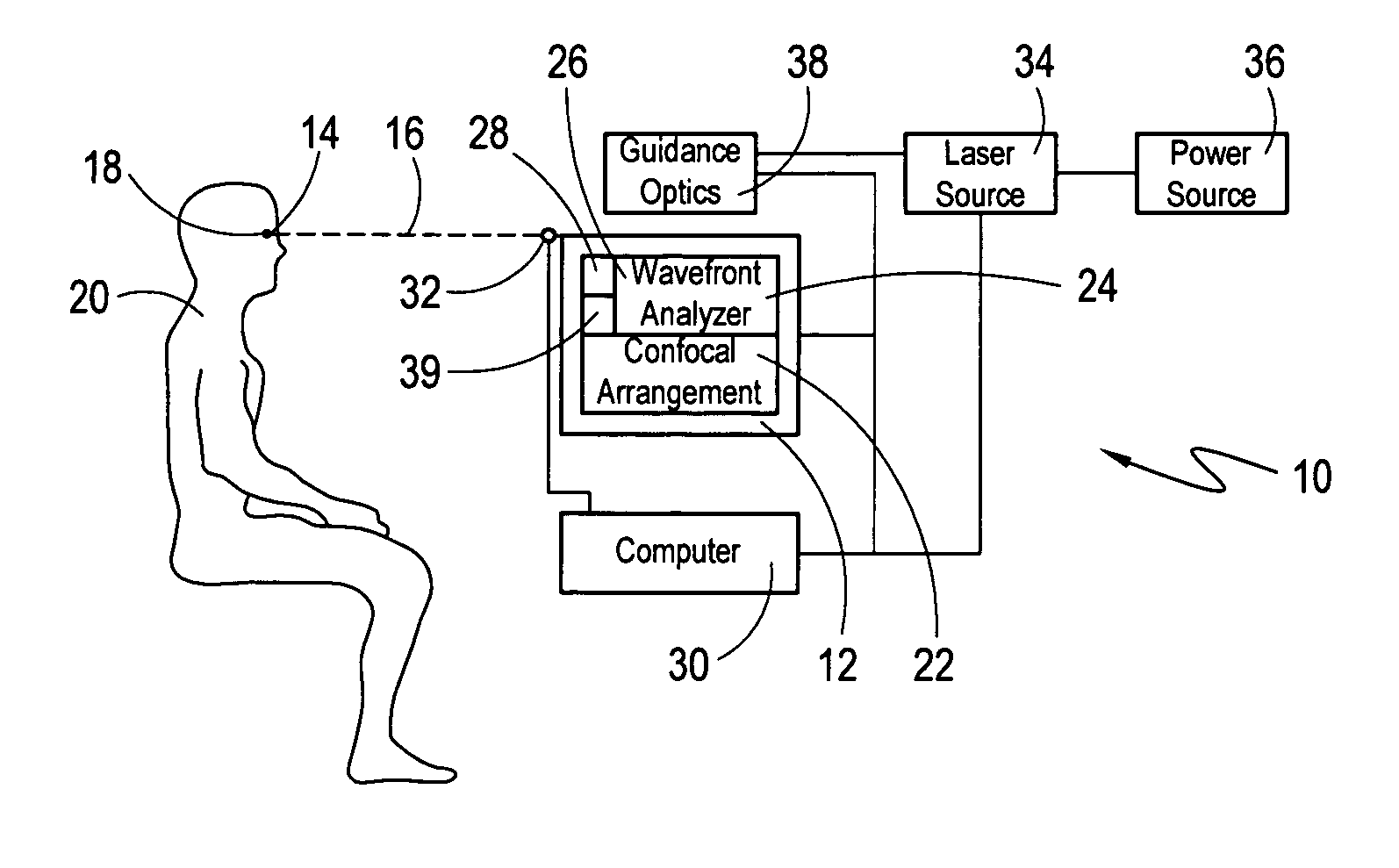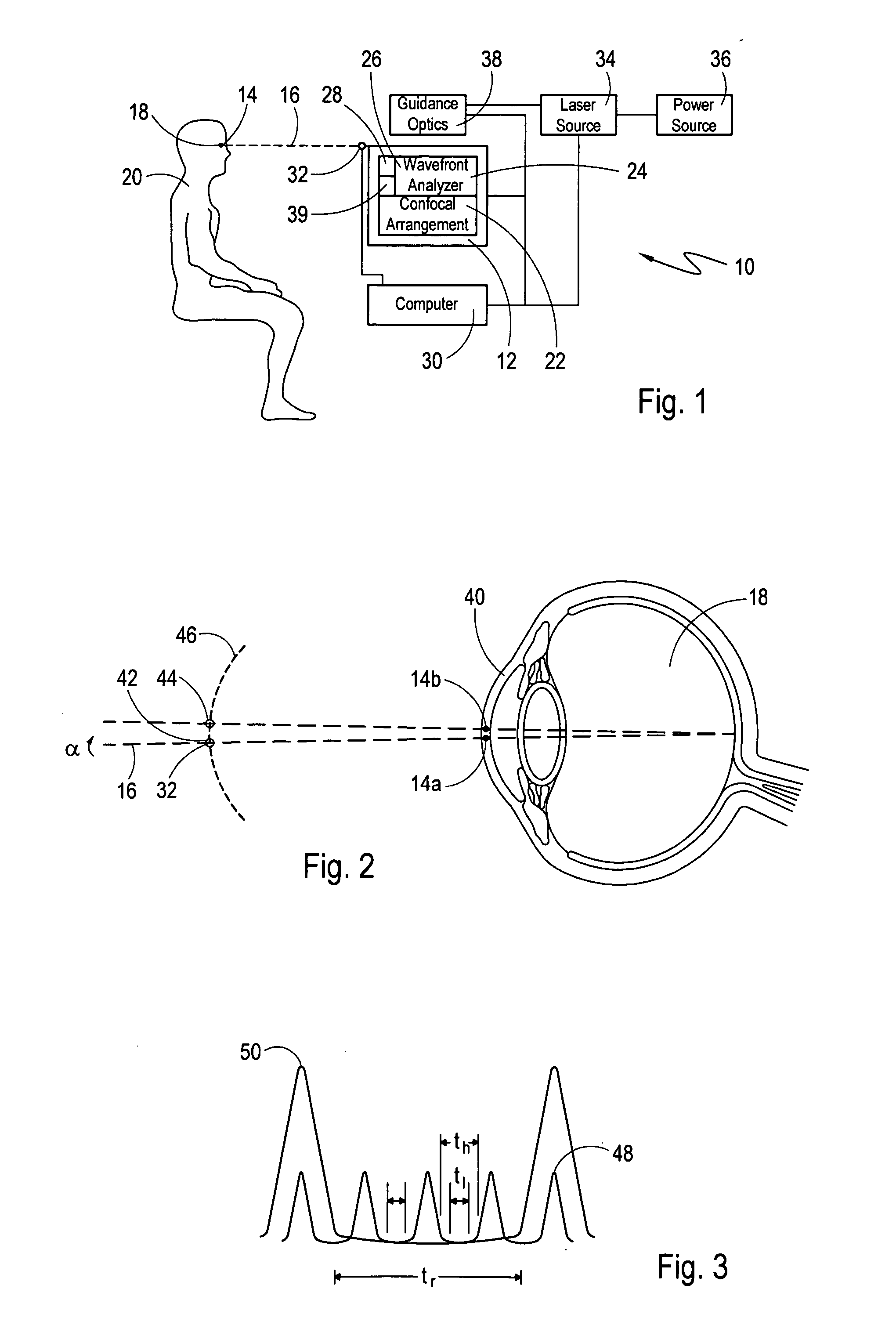Eye position control monitor for laser vision correction
a laser vision correction and monitor technology, applied in the field of system and method of ophthalmic laser surgery, can solve the problems of high cost, imperfect optical system, complicated optical system, etc., and achieve the effect of reducing the number of eye glasses
- Summary
- Abstract
- Description
- Claims
- Application Information
AI Technical Summary
Benefits of technology
Problems solved by technology
Method used
Image
Examples
Embodiment Construction
[0020] A system in accordance with the present invention is shown in FIG. 1 and generally designated 10. As shown in FIG. 1, the system 10 includes an optical element 12 for identifying a base point 14 on an optical axis 16 of the eye 18 of a patient 20. More specifically, the optical element 12 comprises a confocal arrangement 22 and a wavefront sensor 24. The wavefront sensor 24 further comprises a wavefront analyzer 26 and an active mirror 28. In one embodiment of the present invention, the confocal arrangement 22 is used to identify the base point 14 of the eye 18. In an alternate embodiment, the wavefront sensor 24, consisting of the wavefront analyzer 26 and active mirror 28, is used to identify the base point 14. The use of the confocal arrangement 22 or the wavefront sensor 24 is dictated by the operational mode of the system 10, as further described below. As shown in FIG. 1, the optical element 12 is in electronic communication with a computer controller 30.
[0021] As cont...
PUM
 Login to View More
Login to View More Abstract
Description
Claims
Application Information
 Login to View More
Login to View More - R&D
- Intellectual Property
- Life Sciences
- Materials
- Tech Scout
- Unparalleled Data Quality
- Higher Quality Content
- 60% Fewer Hallucinations
Browse by: Latest US Patents, China's latest patents, Technical Efficacy Thesaurus, Application Domain, Technology Topic, Popular Technical Reports.
© 2025 PatSnap. All rights reserved.Legal|Privacy policy|Modern Slavery Act Transparency Statement|Sitemap|About US| Contact US: help@patsnap.com


